China # 10 – A Backroad to Xiahe, Gansu Province – September 2014
After our fresh noodle dinner we spent a quiet night in the hotel parking lot. In the morning we met Green in her room and did some email before heading towards our next stop, Xiahe in the Gannan Tibetan Autonomous Prefecture, Gansu Province. It is famous for its Labrang monastery, the largest edifice of the Yellow Hat sect of Tibetan Buddhism and home to the largest number of monks outside the Tibet Autonomous Region.
Yellow River and Phantom Cities
There was a long way around on a major highway, but our GPSs suggested a shorter more interesting route which still lay within the Chinese government allowed travel itinerary variance (or so we assumed). Relatively flat in the beginning, we could see some of the “phantom cities” covered by 60 Minutes on television. Huge multi-story apartment buildings sprouting immense cranes on top but no one around to live in them. In the small towns we could see what appeared to be perfectly good buildings being demolished, maybe to make room for another “phantom” apartment building? We stopped to buy some fresh chicken and cheese, and having seen yaks in the fields, Gary was hoping for some delicious yak butter like the type we enjoyed in Tuva (Russia) along the Mongolian border. As usual, people were fascinated by our truck and Green kept them from climbing in. They were all very friendly, but just didn’t realize that The Turtle V was our private home.
Salar Moslem and Tibetan Buddhist Villages
After crossing the Yellow River, we came to a small village where people were busy thrashing and winnowing two types of grains we could not identify. We stopped to take some photos and convinced Green that we really needed to walk around in a couple of villages and see how rural Chinese lived. It was a great experience. Salar Moslem (who speak a Turkic language) and Tibetan Buddhist live in separate villages. Homes were very simple, at least from the outside. Several walls were used for drying hand-patted cow dung that must be used for fuel. One group of older Tibetan women was busy mending a pull rope for a beautiful giant bell in their temple. They all had a smile for us.
We passed a large hall lined with dozens of prayer wheels that people would spin as they walked by. Tibetan prayer wheels (called Mani wheels by the Tibetans) are devices for spreading spiritual blessings and well-being. Rolls of thin paper, imprinted with many, many copies of the mantra (prayer) “Om Mani Padme Hum”, printed in an ancient Indian script or in Tibetan script, are wound around an axle in a protective container and spun around and around. Typically, larger decorative versions of the syllables of the mantra are also carved on the outside cover of the wheel. Tibetan Buddhists believe that saying this mantra, out loud or silently to oneself, invokes the powerful benevolent attention and blessings of Chenrezig, the embodiment of compassion. Green had led tours in Tibet, and being a serious Buddhist, was happy to explain all of this to us.
Rural Roads are much more interesting than Super Highways
This was a part of China we really wanted to see, but most of the time we had been trapped on the super highways like rats in a tunnel. Climbing into the mountains, we were entertained by the road signs. Images of Buddhas had been painted on rock faces. Lots of Tibetan prayer flags told us we were getting close to the 3,643 m pass, (11,952 ft). Herds of sheep grazed in the tundra-like valley with many white yurts just visible in the background. The “short-cut” suggested by both our Garmin GPSs was very much under construction, like dirt, gravel and mud. We had just aired the tires down when we came to a total stop. An overloaded truck carrying a mountain of bricks was bogged and a line of cars was stopped behind it. We could smell the clutch of the stuck truck burning up, wheels spinning in the mud.
An overloaded truck gets stuck in the mud
Of course we could help with all our chains, tow straps and winch, but before we dug all that out and got it all muddy, the first thing we asked was, “Do you have a tow strap”. If they had one, and they did, then next step was for them to hook it on to their vehicle, wherever they choose. The next and easiest step was to attach it to one of our tow loops. They figured this out and to the relief of them and the line of cars waiting behind them, we drug them out of the bog. Their bumper came off in the process but they were happy.
With this delay it was dark as we made it down a long series of switchbacks to the town of Xiahe and pulled into the parking lot of a cute hotel Green had stayed at once before. It was her turn to cook, and she meticulously prepared a delicious meal introducing us to lotus root. It was nice to have a kitchen big enough for two people to work in at the same time, and I got to relax after our interesting drive over the mountains. In the morning we could walk into the Labrang monastery.
- We took advantage of the internet connections in Green’s room.
- From the highway we could see some of the “phantom cities” covered by 60 Minutes on television.
- In the small towns we could see what appeared to be perfectly good buildings being demolished, maybe to make room for another “phantom” apartment building?
- We were surprised to see a section of the Great Wall where it seemed to run right through a town.
- It looked like these chickens were very fresh, so be bought one for the road.
- Fresh cheese was a good find on the road.
- Seeing yaks grazing on the roadside gave us hope of finding yak butter in the next town.
- We did find yak butter and tubs of what looked like heavy cream.
- Locals were all very friendly, but just didn’t realize that The Turtle V was our private home.
- We suspected that most locals had never seen an American Ford pick-up or an expedition camper/motorhome.
- What an intriguing face.
- We always carry a supply of balloons for the kids.
- The looks on these young boy’s faces was saying, “Wow—What the heck is that?”
- Crossing the Yellow River was a bit anti-climatic. We thought it would be bigger and yellow but it was still young.
- Fish farms in the Yellow River—but we wondered about the polluted water.
- Homes and barns in the small village were simple but functional.
- These carefully hand-shaped cow dung patties were slapped on walls everywhere, drying for use as winter fuel we assumed or maybe cooking as well.
- Some of the older homes had beautifully decorated roofs, this one was strung with a band of LED lights.
- A group of older Tibetan women were busy mending a pull rope for a beautiful giant bell. They all had a smile for us.
- Old Tibetan Women were mending a bell pull rope at their village temple.
- I wish I could comfortably sit like this gentleman for hours.
- We saw no big tractors so these fields must have been plowed with oxen or one of those one-cylinder flywheel-driven multi-purpose tractors.
- There is no machine that can stack and tie bundles of grain like these. It must be done by hand.
- Some rooftops were carefully stacked with firewood. Special racks were used for drying grain before threshing started.
- Threshing was underway, so we stopped to watch and take some pictures.
- These winnowing baskets were both unique and beautiful.
- Winnowing is an agricultural method developed by ancient cultures for separating grain from chaff.
- We did not find out what these small black seeds or beans were. Maybe sesame.
- We wish we could have found a beautiful winnowing basket like this one in a market.
- Threshing, as seen here, is loosening of grain or seeds from the husks and straw. The next step in the chaff-removal process is winnowing.
- The whole process of threshing and winnowing is very labor intensive.
- These natives were carrying quite a load.
- Tibetan prayer wheels (called Mani wheels by the Tibetans) are devices for spreading spiritual blessings and well-being.
- The scenery was amazing as we began our climb to the pass.
- Images of Buddhas had been painted on rock faces. Lots of prayer flags told us we were getting close to the 3,643 m pass, (11,952 ft).
- The Qingshashan tunnel was an impressive 3,340 m long, (10,958 ft, just over 2 miles.
- We were amused by the road signs.
- In other words, don’t drive in the middle of the road even if it’s smoother.
- Long downhill sections with no turnouts!!
- This has to be a STOP sign.
- Plastic sheets covered the unfinished roadbed to protect it. The sheets were weighted down by thousands of rocks, each placed by hand, one at a time. Cheap labor?
- We always got a laugh from these one-cylinder flywheel-driven multi-purpose tractors.
- Lots of prayer flags greeted us as we crossed the 3,643 m pass, (11,952 ft). We most definitely had arrived in the Tibetan highlands.
- Herds of sheep grazed in the tundra-like valley with many white yurts just visible in the background.
- An overloaded truck carrying a mountain of bricks was bogged down and a line of cars was stopped behind it. We could smell the clutch of the stuck truck burning up, wheels spinning in the mud.
- Yes, they had a tow strap. Why get our strap all muddy?
- They figured out how to attach their strap on our front tow loops. No problem.
- Lock the hubs and shift to low range 4X4; easy does it.
- Well, you are out of the mud and the road is clear again. Sorry about your bumper.
- It was nice to have a kitchen big enough where two people could work at the same time.
- Green was a talented cook. She introduced us to a special lotus root dish.



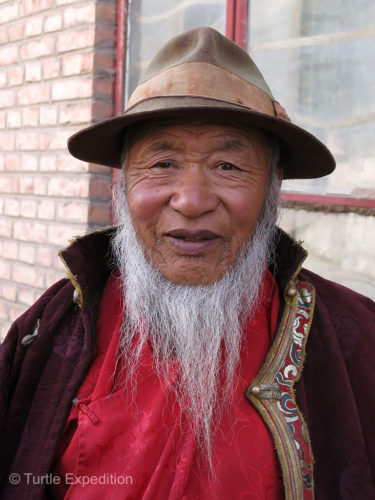
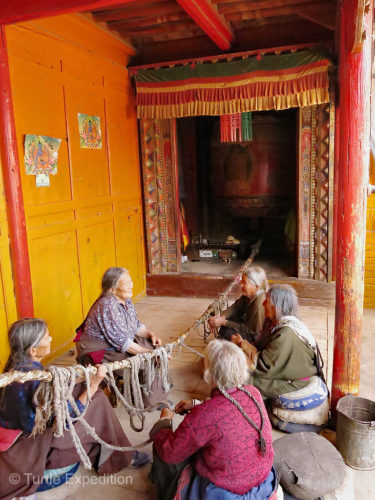
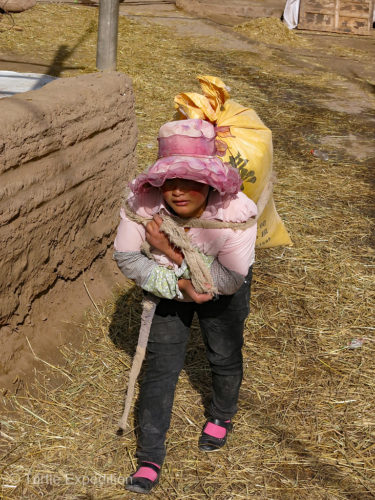
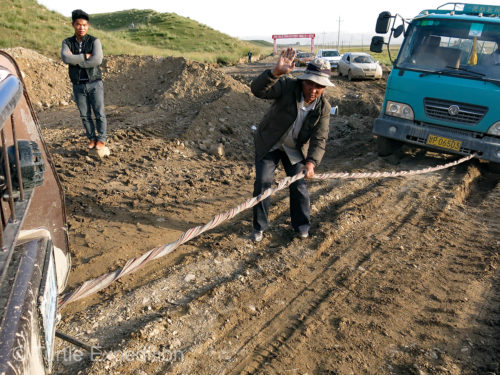
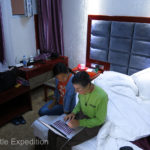
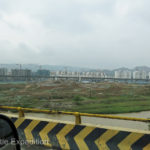
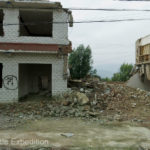
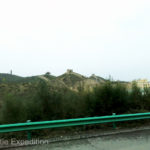
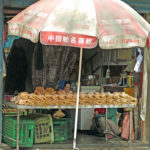
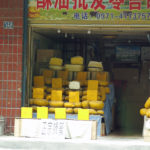
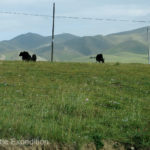
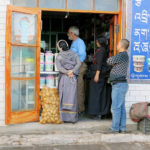
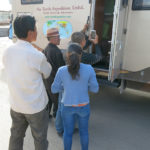
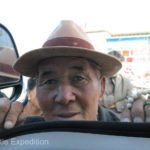
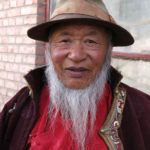
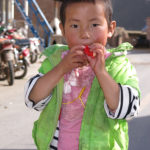
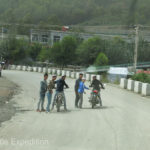
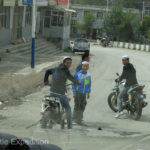
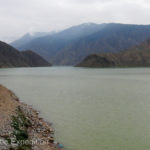
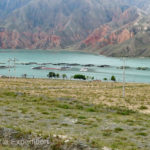
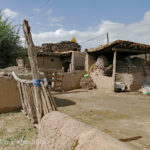
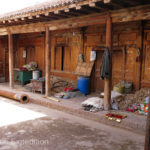
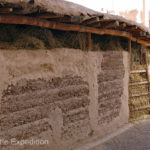
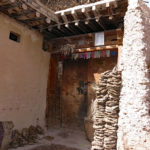
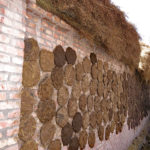
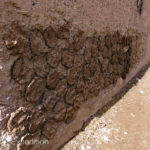
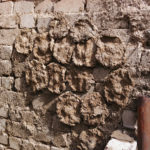
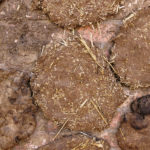
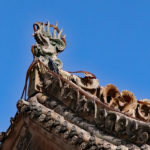
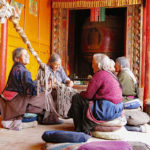
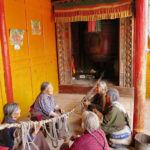
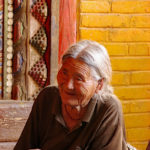
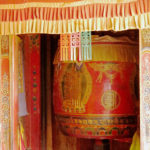
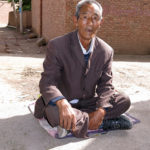
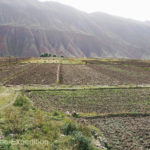
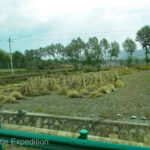
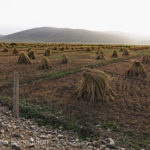
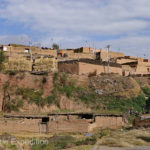
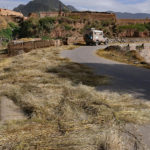
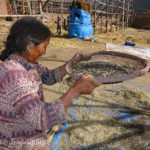
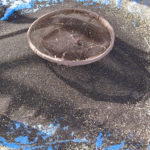
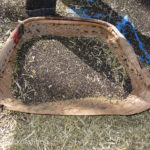
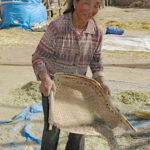
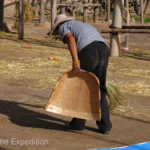
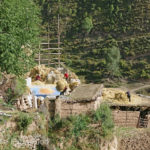
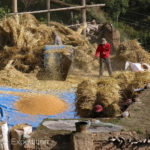
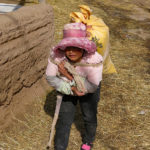
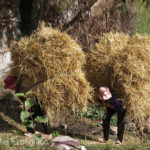
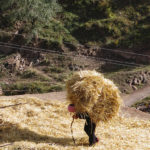
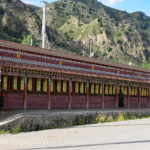
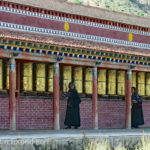
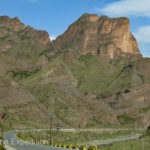

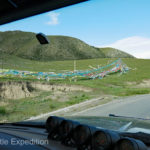
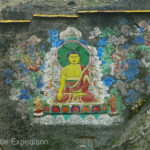
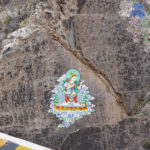
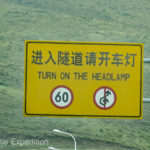
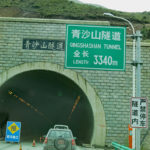
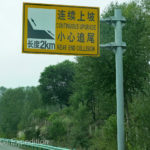
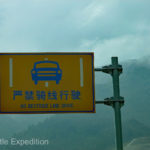
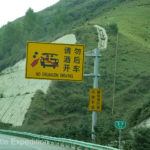
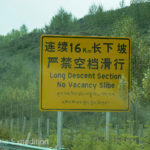
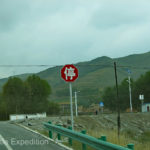
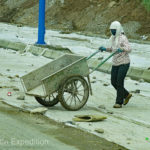
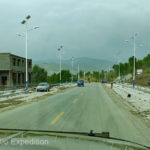
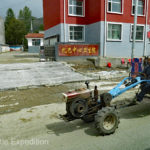
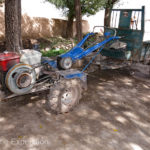
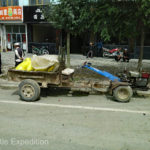
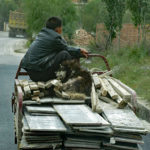
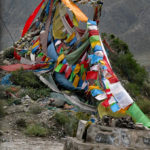
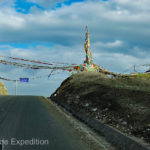

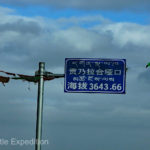
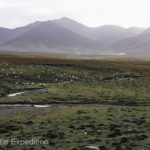

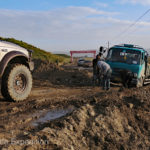
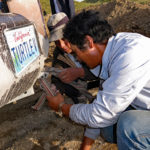
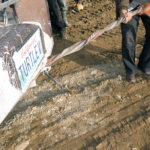
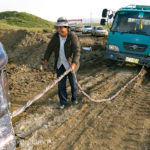
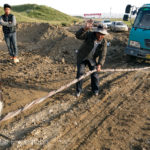
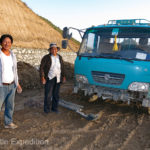
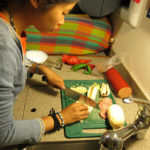
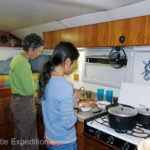
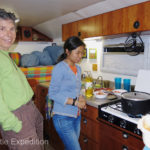
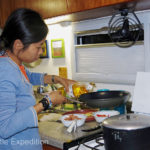





Leave a Comment